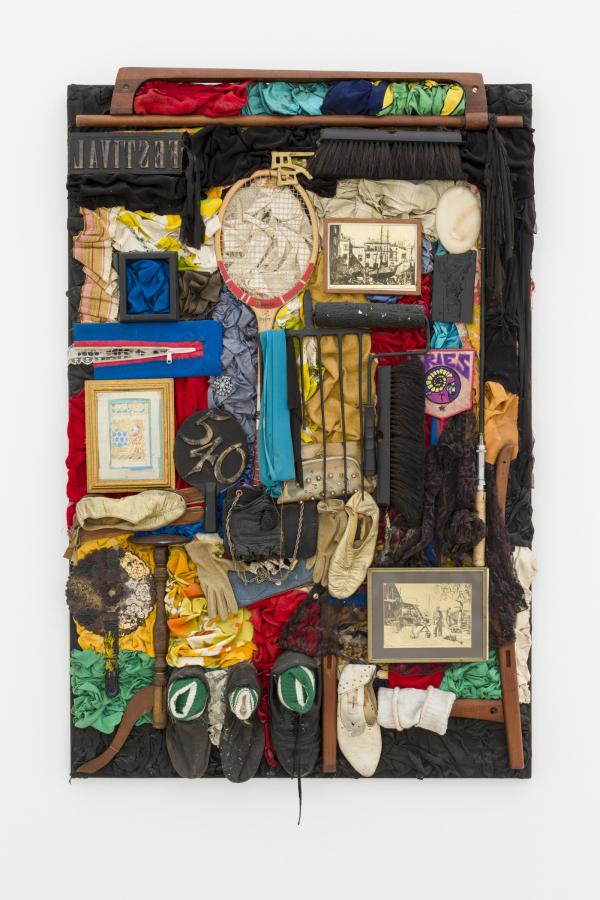The LACMA team is working together from our respective homes to bring you interesting content and creative activities while the museum is temporarily closed to the public. We may not be able to gather together, but we can still create something beautiful.
What Makes Art?
Is clay art? Clay is only the material you use (the medium). Is paint art? Paint is only the material (the medium). Art is what you create no matter the material or medium.
Many artists make art with things they find around their homes—items that maybe you would not traditionally think of as “art materials.” Empty thread spools, rubber bands, scraps of ribbon and lace, or paper clips can all be used as art materials. Artists gather things and find a sturdy base to put them on. Then they start to arrange the “found objects.” They might think of ways to attach some of them together. They move the objects around until they are happy with the composition (the arrangement). They glue the objects to the base or tape them down or tie them.
This kind of art is called ASSEMBLAGE.
-2.jpg)
You have lots of art materials in your home. Ask an adult to help you gather “found objects” you can use to create your own assemblage. Look in your recycle bin. Sometimes the best materials come in packages that have interesting shapes. Look for stray objects, like buttons and loose jigsaw puzzle pieces, small pieces of wood, miniature toys, toilet paper tubes, scraps of cloth, caps from milk cartons or toothpaste, old hair ties, beads, or junk mail. Look at things you would normally think of as trash. Look for a piece of cardboard or anything sturdy to be the base for your artwork.
Set up your studio space—a table or desk will do the trick! Gather the following items:

Supplies:
Found items, cardboard base, glue, tape, string, yarn, and scissors. Paints are optional.
Place your found items on the base. Start arranging the items. Keep moving them around to see where you like them best. Are you going to layer things? Are you going to stack things? If you have a toothpaste cap, do you like it lying on its side or standing up? Think about each item, then think about the whole assemblage.
When you are happy with the composition, start to glue the items to the base. You can leave the items in their original state (the way they looked when you gathered them), or you can paint some items before you glue them, or even paint the whole assemblage when you are finished.
EXTENSIONS: Always ask an adult about materials.
How would you add your own artwork to your assemblage? Would you make a drawing? Would you wrap one of the objects with paper or fabric? Would you build something of your own to add?
You can ask your family to give you things of their own, so you can make a family assemblage.
You can make an “theme” assemblage: For instance, make one where everything is a round shape or make a toy assemblage made up of things like stray LEGOs and puzzle pieces and parts of a game that has missing parts already.

About the Artist:
In 2015, LACMA organized an exhibition of works by the artist Noah Purifoy titled Noah Purifoy: Junk Dada. The retrospective examined Purifoy's dedication to found objects and assemblage through his achievements in painting, sculpture, and installation.

Purifoy lived and worked in Los Angeles for most of his life. He was a founding director of the Watts Towers Art Center and was also a teacher. In the late 1980s, he moved to Joshua Tree where he lived the last 15 years of life, creating 10 acres of large-scale sculptures constructed entirely from found materials.
LACMA would love to see your artwork! Ask an adult to post your photos to social media and tag @lacma.



